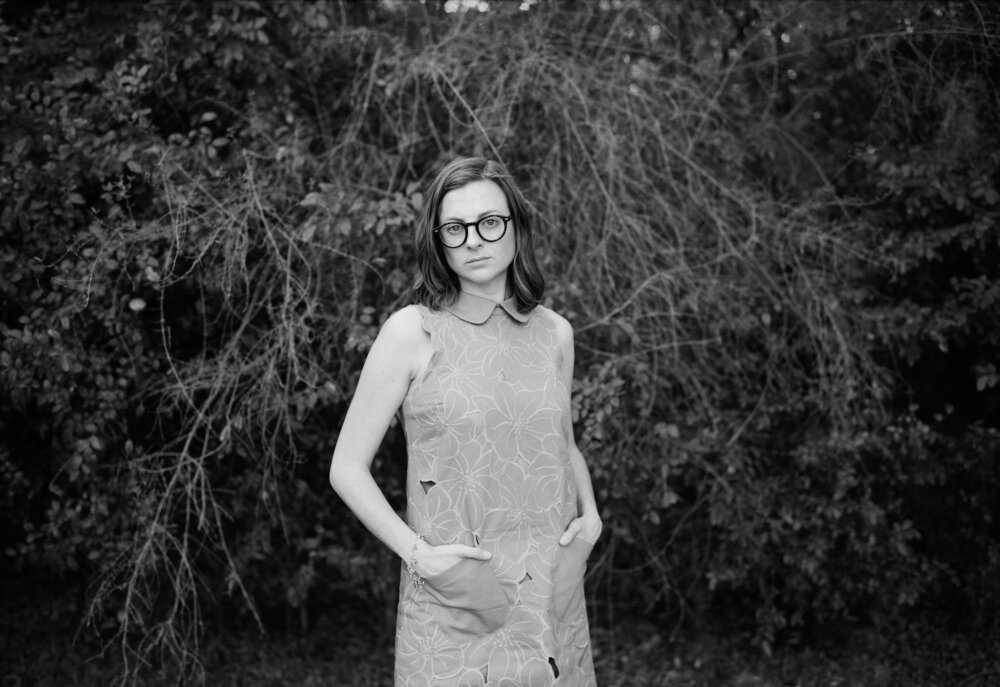Which Ilford Film is Best for Portraiture? An Analysis
by
While many photographers will say that Kodak Portra 400 is the king of color portraiture in the analog photography world, the equivalent black and white film is not really as clear. There’s great options all around. Kodak T-Max 400 is designed to deliver the sharpest images possible. Fujifilm Acros 100 in 120 format can deliver some absolutely beautiful images in a studio. But with Ilford, they’ve got a number of options when it comes to portraiture. The company quite literally specializes in black and white film and for that reason they offer a multitude of products for a multitude of applications. Though if we were to narrow it down to only three films that you should have on you, they would be these three.
What Portrait Photographers Need
Three you say, Chris? Yes. Three. If you wanted something a bit faster I’d say Ilford Delta 400 but I expect a lot of photographers subscribing to La Noir Image to do things in a fashion that I love to call “proper photography.” That means that you’re probably in a studio or a studio like setting where you’ve got at least some control of the light. You’re a creative photographer when you shoot portraits, not a photographer who captures scenes. So you’re directing a scene, placing lights, etc. You’re going for the maximum in details and clarity in the photo. Upon writing this post, I’ve recently acquired a large format Graflex camera; and since I’m aware that many of you have used large format or do portraiture in studio-like settings, I want to help you all navigate the Ilford film world.
Ilford Delta 100

by
So why am I picking Delta 100? That’s a great question: It has a medium level of contrast but balances out the contrast with the sharpness and fine details. My assumption is that most readers here will be using it in 120 format and so I recommend good, longer lenses to really take advantage of not only this film’s sharpness, but what medium format really affords you. For example, a Pentax 165mm f2.8 lens is going to have some seriously shallow depth of field while being incredibly sharp. Lenses like that help portrait photographers really take advantage of even the worst of films. Even if you’re shooting 35mm, using newer lenses will mean that you’ll get a whole lot of details in the images that you’re shooting but not enough to make the photos look very digital in their rendition.
Luckily, Ilford states that it can rated at ISO 100 or ISO 200 in addition to ISO 100.
Ilford Pan F Plus 50

by
Ilford’s slowest film is bound to be on this list simply because of the fact that it also yields the most details in the photos overall. The company recommends using it in either bright natural light or in a studio where you’ve got a whole lot of watt seconds to kill using this slow film. Ilford Pan F Plus 50 also has high edge contrast–which increases the perceived sharpness in the scene overall. For that reason, they recommend it for really big prints. The way that I like to think about Ilford Pan F Plus 50 is like sort of like you’re shooting chrome/slide color film. You really want to nail the exposure and get it right. In fact, that’s how I shoot digital these days. Plus, I shoot film because sometimes I just don’t want to sit down at a computer and edit photos. If I wanted to do that, I’d do digital photography because it’s so incredibly simple and accessible. But with Pan F Plus 50, you should put high expectations on yourself to get your images and your exposures perfectly right. Use a light meter to spot meter various parts of the scene and figure out a great middle ground.
Again, this is why I state that this is a creator’s film.
Ilford FP4 Plus

by
Ilford FP4 Plus has to be one of my favorite medium format black and white films. Why? Well, it’s quite special in that you can meter slightly for the highlights and still get really good details in the shadows no matter what. If you put it up against many other films out there, you’ll see that it has a great contrast in its look. But the fact that it still brings out even more details in the shadows means that you can be a photographer that shoots really high contrast and still gets something in the shadows. This film is also at ISO 125–which a curious one. But this low ISO helps the film deliver a lot of detail while also delivering very low grain. Of any of the films on this list, it reminds me of one of my old favorites: Kodak 400 BW CN. I’m very sure that not a lot of photographers loved the look of that film, but I genuinely did. I used it for portraiture and street photography in a Leica camera.
As with every other film on this list, I really recommend using it in a studio setting or in a location where you’ve got a lot of control over the light to take advantage of what it’s capable of doing. If you’ve got an Oliphant backdrop with an interesting texture, this film is bound to do some crazy cool things.
